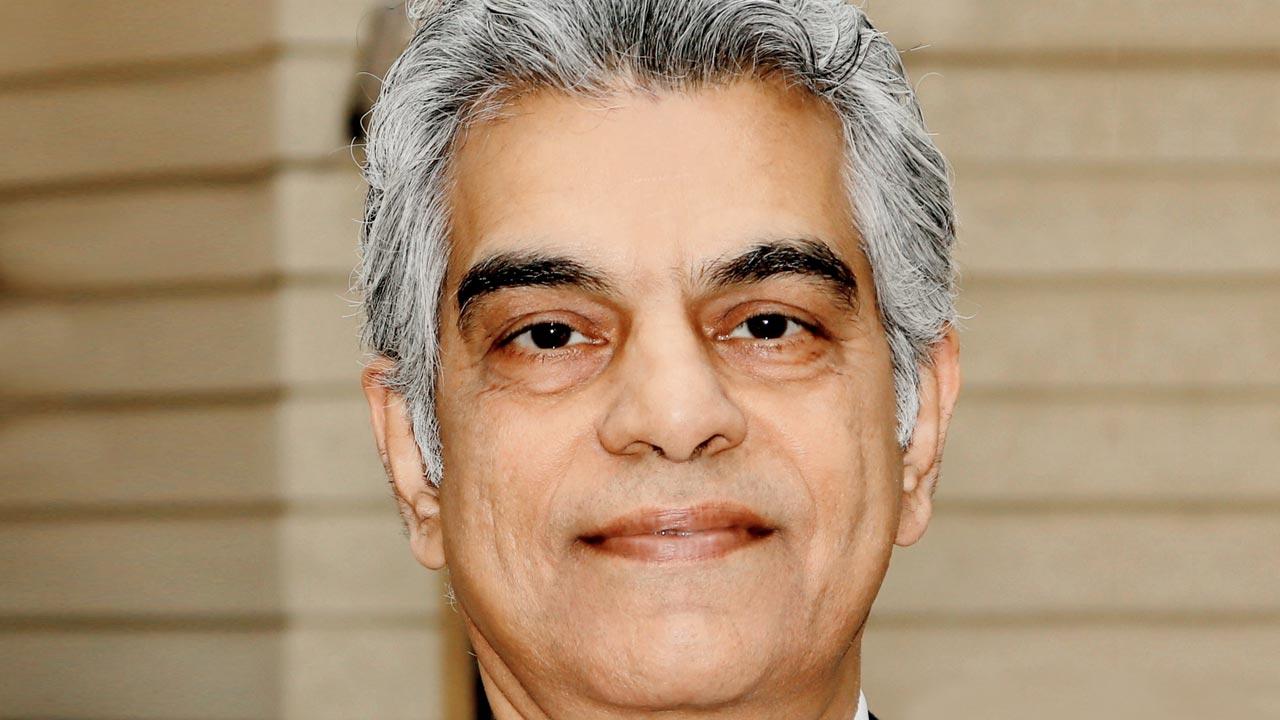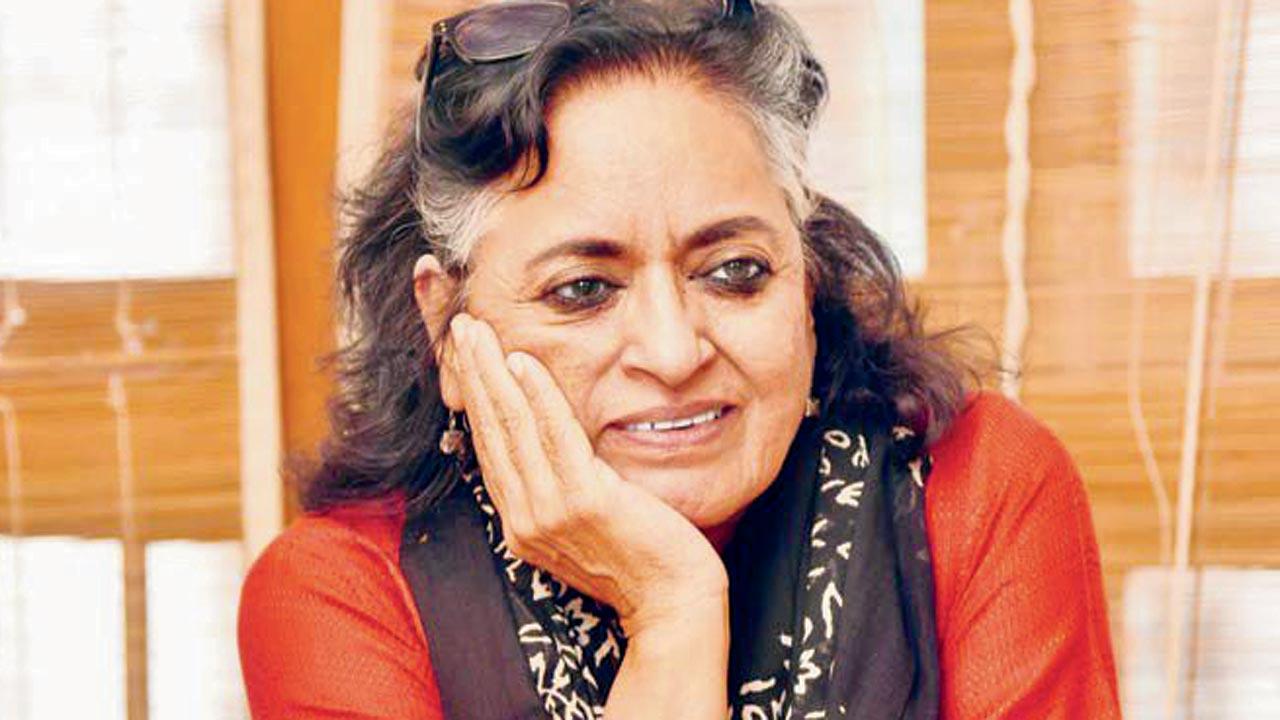After the controversial CMIE report that said majority of country’s employable work force may have stopped looking for work, mid-day spoke to analysts and job eekers. And it looks like India’s job crisis might just be real

Graphic designer Bhavana Phul, 43, moved from New York to Mumbai to be close to her ailing father. She says she hasn’t found a job that pays her well and offers her hybrid working. She has stopped working, and now spends time with her kids. Pic/Sameer Markande
Hu Shih Foong has had a tumultuous two years. The Mumbaikar was a restaurant manager with a leading Chinese eatery at Kemps Corner when the pandemic broke out in March 2020. The initial weeks of uncertainty led to permanent gloom when the restaurant decided to let go off its staff. Having worked in the hotel industry since 2008, Foong remembers being jolted by the sudden turn of events. With a family to look after, including a young son, who is now six-years-old, Foong took the next best job available “out of sheer desperation”. A friend who worked as an executive with a restaurant aggregator and food delivery company, suggested he join them. “For the next six months, I worked as a delivery boy. It seemed like the only option available to me,” he tells mid-day in a telephonic interview. “The initial week was difficult. I didn’t understand the system. It was a completely new area for me.” He, however, believed that the period of hardship would pass, once the lockdown was lifted. But, nothing changed, says the 42-year-old, who is of Chinese origin and goes by the name Daniel Hu in the hospitality industry. “Even though restaurants opened last year, they were running at half the strength. I kept trying, but nothing came my way. The situation hasn’t changed. There are very few jobs available at the managerial level, and if I do find them, I am expected to take a massive pay cut. My search [for a new job] has left me disappointed.” To tide through this lean period, Foong has taken on a consultation role, offering his expertise on project basis to restaurants and cloud kitchens, helping them plan their menus, infrastructure, and coordinating with architects on the layouts of these spaces. “I have taken up about four to five projects in the last year or so. See, it’s not like am not getting work, but there’s no satisfaction. It’s difficult to make ends meet [without a salaried job],” says Foong, who also has a personal loan to repay.
ADVERTISEMENT
 Santa Cruz resident Bhavana Phul moved back to Mumbai from New York with her family in 2017. She says that her job search has been so uninspiring that she has decided against looking for work. “I’d rather be twiddling my thumbs, watching Netflix or hanging out with my kids,” she says. Pic/Sameer Markande
Santa Cruz resident Bhavana Phul moved back to Mumbai from New York with her family in 2017. She says that her job search has been so uninspiring that she has decided against looking for work. “I’d rather be twiddling my thumbs, watching Netflix or hanging out with my kids,” she says. Pic/Sameer Markande
Two months ago, this writer had written about The Great Resignation wave in this newspaper, a global trend that India was apparently mirroring, which saw people quit their jobs due to discontentment with work. Speaking with mid-day, Mahesh Vyas, managing director and CEO of Centre for Monitoring Indian Economy (CMIE) Pvt Ltd, a leading business information company and independent think-tank, says, that “The Great Resignation turned out to be a misnomer because of a misreading of the data”. “People were resigning from companies and joining other companies. Data finally revealed that the Great Resignation was in fact, just a Great Reshuffle [employees leaving their jobs in search of more fulfilling roles with greater flexibility],” he says. According to Vyas, the more worrisome albatross around India’s neck now is unemployment—of the total labour force of 435 million in India in 2021-22, 33 million (which is 7.5 per cent) were unemployed, he says.
 Mahesh Vyas
Mahesh Vyas
Recent monthly trends aren’t promising either. Only last month, a report by the Centre for Monitoring Indian Economy Pvt. Ltd. (CMIE) revealed that India’s labour participation rate (LPR) had fallen to 39.5 per cent in March 2022 from 39.9 per cent in February, which was even lower than what it was during the second Coronavirus wave. “The LPR rate has been falling around the world. For example, the global LFPR fell from 64 per cent in 2000 to 61 per cent in 2019... Ageing of the population is a major reason why the LPR falls in developed countries. As people live longer and stop working and start living off their savings in these countries, the overall LPR falls. In India the fall has been steeper [57 per cent to 48 per cent between 2000 and 2019],” says Vyas in an email interview. CMIE started measuring LPR and other labour statistics from 2016. According to its estimates the LPR in India fell from “47 per cent in 2016-17 to 40 per cent in 2021-22”. The LPR, says Vyas, in India is falling because of a lack of sufficient employment opportunities. “As can be seen from the data, the Indian LPR is much lower than that of other nations. This means that compared to other nations, a smaller proportion of people are participating in the labour market of employment. Lesser people seeking employment implies lesser incomes and this means a lower growth rate than what India could have achieved if its LPR was comparable to global standards.”
CMIE believes that because “people cannot find jobs they get dejected and leave the labour markets”.
It’s a similar dejection that Foong has been experiencing—being unhirable after 12 years of work behind him, isn’t the best feeling, he confesses.

Ritu Dewan
At 43, Santa Cruz resident Bhavana Phul is staring at early retirement. Phul moved back to Mumbai from New York with her family in 2017, so that she could be closer to her father, who unexpectedly took ill. “For the longest time, I truly believed that India was booming, and that I’d be able to get something far more worthwhile back home,” says the graphic designer, who was working in the Big Apple since 1999. Her last job there was as art director for an American multinational investment bank and financial services company. “It gave me flexibility of time, and the money too, was decent.”
Returning to Mumbai, the mother of two daughters was hoping for a hybrid opportunity that gave her enough leg room to juggle home and work, but “such a space doesn’t exist in India, unless you are an entrepreneur.” “The more I started looking, the more I realised that nobody was willing to hire a person who didn’t want to work six days a week,” she says. Though Phul took up a few projects here and there, she felt like she was being exploited professionally. “I wasn’t driven by the money aspect, but the sheer want to create and work. That wasn’t happening. The process was so uninspiring that I figured that this is just not what I want to do. I’d rather be twiddling my thumbs, watching Netflix or hanging out with my kids.” Phul has stopped looking for work since November 2021. “I remember myself as a dooer. I had never been fired from any of my past jobs. But in India, where you think there are so many opportunities, it was difficult for me to tap into the market as a woman.”

Award-winning journalist Sohini Chattopadhyay, who was honoured with the National Award for film criticism in 2019, has been freelancing for nearly eight years. Her last stint was with a national magazine, which she had to quit, after the publication discouraged her shift to her home city Kolkata, where she was needed due to personal commitments. Though she has had a satisfying stint as a freelancer, where the lack of a fixed salary was compensated by good work—including a number of international and national fellowships—Chattopadhyay has, for the last one year and more, been contemplating moving back to full-time journalism. “But where are the jobs?” she asks. “I haven’t applied yet, but that’s also because I cannot find an opportunity for someone with my kind of experience,” says Chattopadhyay, who has been in journalism for over 15 years, which includes eight years of full-time work. “All the opportunities that I can find, and for publications where I’d want to work in, are mostly entry-level jobs, with three to five years of experience. It’s disappointing to say the least.”
CMIE has indicated that India’s unemployment problem is particularly acute for women, with only nine per cent of the eligible population employed or looking for positions. “As women account for about half of the working age population, their reticence affects growth in household incomes,” says Vyas.

Freelance journalist Sohini Chattopadhyay, who was honoured with the National Award for film criticism in 2019, has, for the last one year and more, been contemplating moving back to full-time journalism. But most of the opportunities are entry-level jobs, she says. Pic courtesy/Zakaria Zainal
Vyas says that it’s not just the “amount of employment we generate in India, but also the quality of employment,” that is an issue. “Only about 20 per cent of the employment in India is in the form of salaried jobs. [But] Many [of these jobs] don’t provide a clear contract of engagement, paid leave, or saving schemes; many regularly pay salaries with huge delays. As a result, these salaried jobs are also not decent jobs.”
But, salaried jobs, he says, are least problematic. “About 30 per cent of the employment is in the form of small traders and vendors or daily wage labourers. This is a highly vulnerable form of employment and is, perhaps the farthest from the concept of a good quality employment. Similarly, farming accounts for about 30 per cent of employment, which includes agricultural labourers. These also face low ages and no benefits unlike what a salaried employee gets. The rest are entrepreneurs. While there is much charm in being an entrepreneur, most of these are self-employed entrepreneurs. They probably began their own enterprise and employ no one else, because they could not find any decent employment.”

It is important that India produces larger numbers of better quality jobs of the kind that large enterprises provide, says Vyas. It’s only these opportunities that will provide some scope for households to build savings and grow their assets and therefore, enjoy the benefits of growth. This sentiment is shared by Pune-based Bhavya Mehta, 26, a software developer whose job search during the last four years, has only left him disappointed forcing him to take up projects with MNCs and startups abroad. “Right after I graduated in 2018, I got a job with a fintech company. But the work culture wasn’t great, and there was a lot of micro-management.” Mehta quit his job in November of 2019, and started honing his software skills, so that he could seek an opportunity that was more in tune with what he wanted to pursue. “But the pandemic happened, and all my plans hit a pause. I was applying, but there was a hiring freeze. That’s when I started taking baby steps into freelancing, and it was going fairly well.” Though he got a full-time job in July 2020, he continued working on contract basis with a New York-based startup, which was in the blockchain space. “That company [in New York] paid me a lot more.” At some point he realised that a job with a fatter salary, which was challenging enough and came close to his skill-sets, was hard to come by, especially in India. “They couldn’t match the pay scale I was looking for. It’s sad that Indian companies rejected me just because I wouldn’t settle or negotiate.” Bhavya is now working with companies abroad, taking up only blockchain projects, as he feels there is currently a talent gap there.
Apna.co, a blue-collar employment startup, in its post-pandemic quarter analysis, which it shared with mid-day, claims that the last quarter has “proved to be exciting for job seekers as the markets finally opened up”. The networking platform witnessed promising trends in the Indian job market, stating that “Indians gave more than 3 crore interviews in the last three months, a 13.71 per cent jump in comparison to the previous quarter [October-December 21].” “apna.co has recorded a 42 per cent QoQ [quarter-on-quarter] growth in its employer base.” Manas Singh, chief business officer, said, ‘The Indian economy is on an optimistic growth trajectory this last quarter and we are certain that this year, India will finally bounce back completely.”
 Pune-based Bhavya Mehta, 26, a software developer, specialising in blockchain, says companies in India haven’t been able to match his salary expectations, forcing him to take up projects with MNCs and startups abroad
Pune-based Bhavya Mehta, 26, a software developer, specialising in blockchain, says companies in India haven’t been able to match his salary expectations, forcing him to take up projects with MNCs and startups abroad
Vyas admitted that some sectors are witnessing a surplus, for which there in adequate talent. “It is true that there is a big mis-match between the demand for labour and the corresponding supply. Sectors that have a great demand for labour are unable to find appropriate people,” he says, adding, “Yet, there is growing unemployment. We seem to have the worst of both worlds.”
Incidentally, CMIE’s report was challenged by the Union Ministry of Labour and Employment in a statement on April 26. The ministry, as reported by downtoearth.org.in, stated that “the authentic data source of employment/unemployment indicators in India are released by the Union Ministry of Statistics and Programme Implementation (MoSPI) through Periodic Labour Force Survey (PLFS)”. According to this data, the LPR has increased steadily from 49.8 per cent in 2017-18 to 53.5 per cent in 2019-20. Vyas refused to add more to this, saying he “respects all alternative views”.
 On the occasion of National Unemployment Day, outside CSMT, September 2021. Youth Congress workers along with MLA Zeeshan Baba Siddique, President, Mumbai Youth Congress, protested by selling peanuts while wearing graduation gowns to highlight the plight of educated youth who they claimed are forced into menial jobs due to rising unemployment. Pic/Getty Images
On the occasion of National Unemployment Day, outside CSMT, September 2021. Youth Congress workers along with MLA Zeeshan Baba Siddique, President, Mumbai Youth Congress, protested by selling peanuts while wearing graduation gowns to highlight the plight of educated youth who they claimed are forced into menial jobs due to rising unemployment. Pic/Getty Images
Ritu Dewan, former director and professor, Department of Economics, Mumbai University (Autonomous), says that CMIE “is rather thorough”. She doesn’t, however, believe that people are exiting the labour force, because in India, she says, one can’t afford to do so. But there’s definitely reluctance to work when perceived in a broader context. “In universities and colleges, for instance, a majority of the teaching staff are contractual. If they are going to be paid a measly salary [and have no job security], they are definitely going to be reluctant workers,” she says. Dewan says that there are very few job opportunities to match the qualifications of individuals. “Even before the pandemic, regular salaried jobs had fallen by 21 per cent. If Bachelor’s and Master’s students are going to be doing Swiggy and Zomato, why would they study?”
While the demand-based National Rural Employment Guarantee Act (NREGA)—renamed as the Mahatma Gandhi National Rural Employment Guarantee Act or MGNREGA in 2009—aims at enhancing the livelihood security of the people in rural areas by guaranteeing hundred days of wage employment in a financial year, to a rural household whose members do unskilled manual work, Dewan says that based on anecdotal surveys, they’ve seen a lot of competition there too. “Unfortunately, it’s the only succour for people, and demand-driven scheme that we have. But it has its problems. Our demand [for this budget] was to increase the number of guaranteed work days to 200. But official data available indicates that during the pandemic, the average working days were just about 25. And the increase in wages for NREGA in some states was as low as Rs 1 or Rs 2.” In Maharashtra, the job portal Mahaswayam, run by the Department of Skill Development, Employment and Entrepreneurship—launched by former CM Devendra Fadnavis in 2017—is hoping to cover some ground. Around 17,700 unemployed youth bagged jobs through the portal in 2020. But Dewan says that the majority especially rural India, has little access to online portals.
Finance Minister Nirmala Sitharaman, while presenting the Union Budget 2022 said that the next target of the government was to create 60 lakh jobs with their push to privatisation, but Dewan says that there are nearly 30 lakh government jobs currently lying vacant. “How can you push it on someone else? Who is not performing here?” she asks.
The Centre this year will also be introducing four new labour codes—the Code on Wages, Industrial Relations Code, Social Security Code and the Occupational Safety, Health and Working Conditions Code—which will replace the existing 29 labour laws. PM Narendra Modi’s government has hailed it as “the biggest labour reforms in India” and one “which will help create significant employment”. “This seems more like a rhetorical statement. The preamble itself states that the codes are meant for the ease of doing business, which means you will keep exploiting labour, giving them lower wages...” says Dewan, adding, “The codes redefine work, worker and workplace. Now, you will be a worker only if you are in an industry, not if you are in a private household. So, there will be a huge category of workers, who won’t be defined as workers anymore. This is in fact an attack on labour, labourer and labour rights.”
Vyas says that the way forward would be to “bump up the investments by large enterprises who can provide the best quality jobs”. “India needs a large enterprises-friendly environment and it needs to ensure that its human resources are appropriately educated for the demand that these enterprises will generate.”
33 million
No. of Indians in the labour force of 435 million who couldn’t find employment in 2021-22
 Subscribe today by clicking the link and stay updated with the latest news!" Click here!
Subscribe today by clicking the link and stay updated with the latest news!" Click here!








